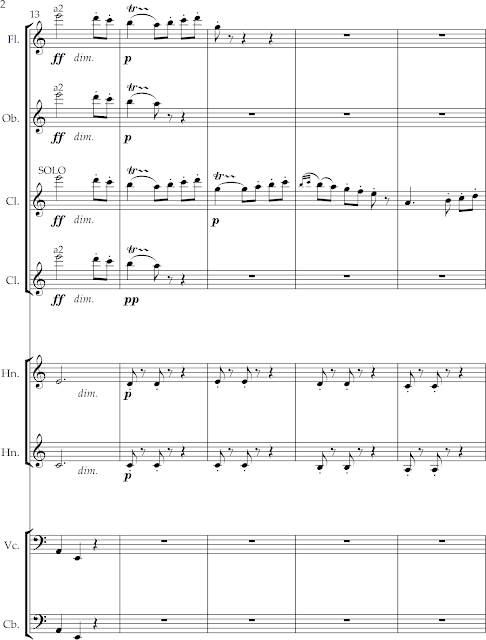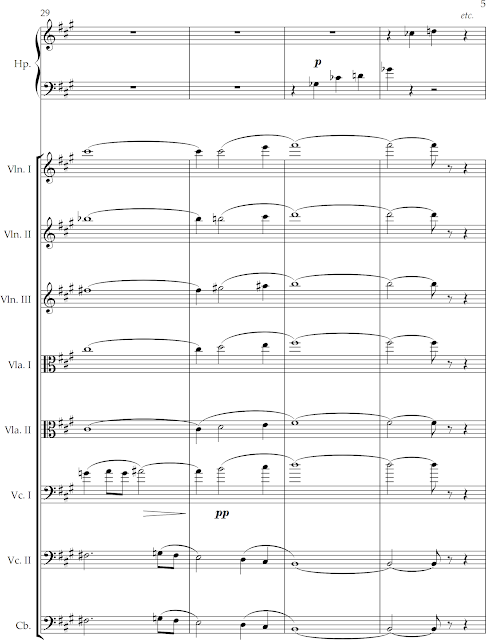CLXIX. SHOSTAKOVICH, Dmitri (1906-1975)
One can get dizzy trying to parse out all the different ideas and interpretations of this -- the greatest of all 15 symphonies; certainly the most popular, the most performed.
The Fourth (see Post VIII) -- written in 1935-36 -- was disasterously withdrawn and put in the top drawer for over 25 years! It remains Shostakovich's most powerful symphony -- even though the Fifth is better known by the general public.
**
The facts are that Stalin put Dmitri in the penalty box after he sat through some rehearsals of the Fourth, and the opera, Lady Macbeth of Mtsensk and halted all performances of both works (the opera was renamed Katerina Izmailova and finally performed in 1962.)
Apparently, the trombones were too loud, or "too many notes" -- who knows?
**
The fact is that the Fifth was uproariously received by an adoring public; the bureaucratic officials weren't so sure, but in the end gave in ...
A few days before the Moscow premiere in January of 1938, an article appeared in the newspaper purportedly written by Shostakovich, in which he states that the work "is a Soviet artist's creative response to justified criticism."
To this day, no one really knows if DS really wrote that, or that it was written by the party officials, who engineered Shostakovich's rehabilitation as carefully as it had his fall a few years earlier. In any case, it would not be the last time DS got in trouble with the authorities.
**
The music is astonishing stuff:
First Movement
The symphony opens with the string section playing a jagged, offset rhythm, which immediately calms down into a lilting melody played by the first violins (whose part begins with a quarter-rest, an eighth-rest, a sixteenth-rest and a thirty-second-rest!):
This is all nicely developed up to some soft B-Flats, which act as a dominant to this stunningly gorgeous melody in E-Flat Minor:
The same feel is repeated a few bars later, but this time the violas take the melody:
Things get stormy; further developed; and along comes this cute military march, with a skipping melody remiscent of the First Symphony:
All hell breaks loose; the initial "jagged" theme returns; and again we're treated to the soft, lush quarter-eighth pattern in the strings -- this time with a flute and French Horn duet on top:
The movement ends in solemn D Minor, with a delicate solo violin and a chromatically, creeping celesta:
Second Movement
Celli & basses introduce a gruff, rough, insistent 3/4 while the woodwinds -- especially the E-Flat Clarinet and bassoon -- play a grotesque-like ornament ...
The movement ends on a hushed picardy third (F-Sharp Major) ... [no relation to Patrick Stewart ...]
Movement IV
Here's where the controversy gets thick.
Is this a hymn to joy or a satirical take on the glorious Motherland?
In Solomon Volkov's 1979 book, Testimony, he claims that Shostakovich himself told him it was akin to someone beating you with a stick, and saying "Rejoice! Rejoice! You must rejoice!"
Apparently, Shostakovich's dearest friend -- Mstislav Rostropovich -- took him at his word ... his 1994 recording with the National Symphony Orchestra takes this at a plodding tempo -- bogging down the satire with lead ...
Maestro Afkham takes the middle ground -- not too fast, not too slow; in any case, the rejoicing -- whether real or satirical -- is one of the most famous riffs of the 20th century:
































No comments:
Post a Comment